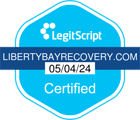Alcoholism: Medications and Other Treatment Options
Before discussing the medications used to treat alcoholism, you must understand what alcoholism is. Alcoholism is an addiction to alcohol to the point that the person cannot control their drinking habits. Alcoholism is also known as alcohol use disorder. The disorder is categorized into mild, moderate, and severe categories.
If untreated, alcoholism can affect the life of an individual dramatically. Those who struggle with addiction find it difficult to function without alcohol, making it hard to achieve their professional goals and maintain relationships and health. Sometimes, alcoholism can lead to serious complications and even death.
However, you don’t need to struggle with alcoholism in silence. It is a disease like any other, and there is nothing wrong with seeking treatment. There are various ways alcoholism can be treated, some involving medications while others involve sharing the journey and therapy.
What Causes Alcoholism?
After a significant time of drinking, your brain will eventually become dependent on alcohol to generate certain chemicals. As a result, quitting drinking can be challenging for heavy drinkers and might result in unpleasant and dangerous withdrawal symptoms.
Biological, environmental, social, and psychological factors are some of the most common contributors to alcoholism. Understanding what may have led to your alcoholism could help you in the process of recovery.
Biological Factors
While some people can reduce their alcohol consumption, others have a strong urge to continue. This urge could be a result of physiology and genetics. For some, alcohol produces pleasurable sensations, encouraging the brain to repeat the action. This type of behavior can increase the likelihood of alcoholism.
Additionally, certain substances in the brain can increase vulnerability to alcohol consumption. For example, experts have shown that alcoholism may be linked to a number of genes in diverse chromosomal locations. If these genes are passed down across generations, family members are significantly more likely to have drinking problems.
Environmental Factors
In recent years, researchers have examined the potential relationship between the environment and the risk of alcoholism. Numerous studies have explored, for instance, whether a person’s proximity to liquor stores or bars influences the likelihood that they will develop alcoholism. It is believed that those closer to alcohol facilities have a more favorable attitude toward drinking and are more inclined to engage in the activity.
Furthermore, alcohol producers are hammering the public with alcohol advertisements. Many of these advertisements portray drinking as a desirable, pleasant activity. Between 1971 and 2011, alcohol advertising in the U.S. surged by more than 400%.
Another environmental factor that can influence the amount of alcohol an individual takes is the amount of money they make. Contrary to widespread assumption, individuals from affluent communities are more likely to use alcohol than those living in poverty. According to a recent annual survey on consumption patterns, around 78% of those with a yearly family income of over $75,000 consume alcohol. This is much higher than the 45% of those with an average income of $30,000 and below.
Social Factors
Social factors can affect a person’s perceptions of drinking. Culture, religion, family, and employment impact many of your actions, including drinking. In most cases, the family significantly impacts an individual’s chance of developing alcoholism. Children who have been exposed to alcohol abuse from a young age are at higher risk of developing alcoholism.
Beginning a new job or entering a new school can also make you more vulnerable to developing an alcohol use disorder. You’re at a point in life where you want to meet new people and cultivate ties with your peers. It’s possible that your need to be accepted by others and have a sense of belonging could lead you to participate in things you normally wouldn’t do. You might not even realize it, but before you know it, you’ll be attending every workplace happy hour, drinking more regularly, and even yearning for alcohol after a long workday. These are all warning indicators of alcohol use disorder (AUD).
Psychological Factors
Several psychological issues may enhance the likelihood of excessive drinking. Every individual responds to circumstances uniquely. However, how you deal with these emotions can influence your conduct. People with high levels of stress, anxiety, depression, and other untreated mental health disorders are more susceptible to alcoholism, for example. In such situations, alcohol is frequently used to repress emotions and lessen the severity of psychological disorders.
However, drinking can lead to an alcohol use disorder. The more you use alcohol to alleviate feelings of pain and adversity, the more your body adapts to the drug and becomes dependent on its effects. Co-occurring alcohol misuse and mental health disorders, such as depression, bipolar disorder, and schizophrenia, can result in various severe side effects. Talk to a specialist if you are struggling with psychological issues instead of suppressing your emotions with alcohol.
How to Treat Alcoholism
There are various alcohol treatment options that you can use if you are struggling with alcoholism. In most cases, the best treatment will depend on your situation and goals. Most people use a combination of two or more treatment options. You can get the treatment from home or in a treatment facility. The most common ones include the following.
Alcohol Detox
Detoxification, or medically managed withdrawal, usually serves as the initial phase of treatment. The treatment takes between two and seven days and is often referred to as “detox.” It may be necessary to use sedatives to prevent withdrawal symptoms. You can get a detox treatment from a hospital or a drug rehab.
Psychological Counseling
Therapy can help a person understand their problem with drinking and promote recovery from the cognitive effects of alcohol use. These services can be provided to individuals as well as groups. You might benefit from couples or family counseling. The support of family members is often an essential component of the healing process.
Treatment of the Underlying Problem
There is a high correlation between alcohol use disorder and other mental health issues. Treatment options for mental illness may include talk therapy (psychotherapy), prescription drugs, or a combination. Once you get treatment for these underlying problems, you might stop seeing the need to drink alcohol.
Spiritual Practice
People who consistently participate in some form of spiritual practice may discover that it is simpler to continue recovering from alcohol use disorder. For many people, one of the most critical aspects of the recovery process is developing a deeper understanding of their spiritual beliefs. Take your time, learn more about yourself, and connect with your spiritual side.
Medications for Alcoholism
There are plenty of medications used to treat alcoholism. Some of the most effective ones include the following.
Antabuse
Antabuse was the first drug approved to treat alcohol alcoholism. The majority of people who take Antabuse vomit after consuming alcohol. This is supposed to serve as a deterrent to drinking.
In the 1920s, Antabuse was first created for use in industrial procedures. In the 1930s, the alcohol-aversion benefits of Antabuse were first documented. Workers exposed to tetraethyl thiuram disulfide, the active ingredient in Antabuse, in the vulcanized rubber sector felt unwell after consuming alcohol.
In 1948, Danish researchers searching for therapies for parasite stomach illnesses discovered the alcohol-related consequences of Antabuse when they felt unwell after consuming alcohol. The researchers initiated a new series of experiments on using Antabuse to treat alcoholism.
After a few years, the FDA approved Antabuse for the treatment of alcoholism. Wyeth-Ayerst Laboratories initially produced it under the name Antabuse. However, this drug is often referred to as disulfiram.
Initially, higher doses of disulfiram were administered to establish alcohol aversion conditioning by making people extremely ill if they drank. Later, following numerous reports of severe side effects, including a few deaths, Antabuse was taken in lower doses to aid in alcohol abstinence.
Naltrexone
Naltrexone functions in the brain by inhibiting the intoxicating effects of alcohol. Naltrexone was initially created in 1963 to treat opiate addiction. In 1984, the FDA approved it for drug abuse treatment for substances such as heroin and morphine.
In the 1980s, it was discovered that naltrexone also decreased alcohol consumption. Clinical trials on humans followed in the late 1980s and early 1990s. These studies demonstrated that naltrexone, when paired with psychosocial therapy, can lower alcohol cravings and relapse rates in alcoholics. In 1994, the FDA approved naltrexone for the treatment of alcoholism.
Campral
Campral (acamprosate) is a recent drug licensed to treat alcoholism or alcohol dependency in the United States. It works by regulating alcohol-related alterations in the brain, minimizing some of the prolonged physical suffering and mental discomfort that can occur when a person quits drinking. This distress is also known as post-acute withdrawal syndrome and might result in relapse.
The French business Laboratoires Meram created acamprosate in 1982 specifically for the treatment of alcoholism. It was evaluated for safety and effectiveness from 1982 until 1988 when the French government allowed its use to treat alcoholism.
For over two decades, acamprosate was widely used throughout Europe to treat alcoholism. However, it was not until July 2004 that it was approved for usage in the United States.
How Are Alcoholism Medications Administered?
How the medication will be administered will depend on the type of medication that you will be taking and where you will be taking it. Some versions of naltrexone, such as Vivitrol, are taken through injection. Generally, they are injected once a month by a health professional. However, other versions are taken orally, but they need to be taken consistently. Your doctor will administer the drug the right way.
At-home Remedies for Alcoholism
While the best solution is to get help from professionals, there are a few things you can do from home to reduce the symptoms of alcoholism. The following covers a few to help you out.
Develop Healthy Habits
You can develop healthy habits such as getting good sleep, regularly engaging in physical activities, and managing stress more effectively. By doing so, you can manage alcoholism, especially if you are taking alcoholism medications.
Avoid Doing Things That Involve Alcohol
Many activities at home involve alcohol. Parties and family gatherings often involve drinking. If you are trying to quit, you might want to decline invitations that will include drinking alcohol, especially if you know you will not be able to refuse. Instead, find hobbies that do not involve drinking.
Consider Your Social Circle
Make it clear to your friends and colleagues that you are done with alcohol once and for all. That way, they will respect your decision and not drag you to parties that you don’t want to be at. If they can’t help you on your journey, upgrade your social circle and find people who will support your recovery.
Why Liberty Bay Recovery Center?
Liberty Bay Recovery Center is committed to ensuring that people improve their lives. You don’t need to struggle anymore with alcoholism because you can get help.
In our clinic, you can get inpatient rehab while being monitored by highly qualified medical professionals and addiction specialists. The treatment takes between 30 and 45 days. Alternatively, you can choose the partial hospitalization (PHP) option and get treatment and return home at night instead of staying in the facility.
Also, you can use our intensive outpatient program, a full-day treatment for people who don’t need 24-hour care. Still, we provide food even for outpatient programs. Finally, you can choose our traditional outpatient program. With this option, you are only required to come 15 hours per week, which enables you to keep up with work, family, and other responsibilities.
Don’t suffer in silence. You can seek help today and start on the path to a healthier life free of alcohol.




